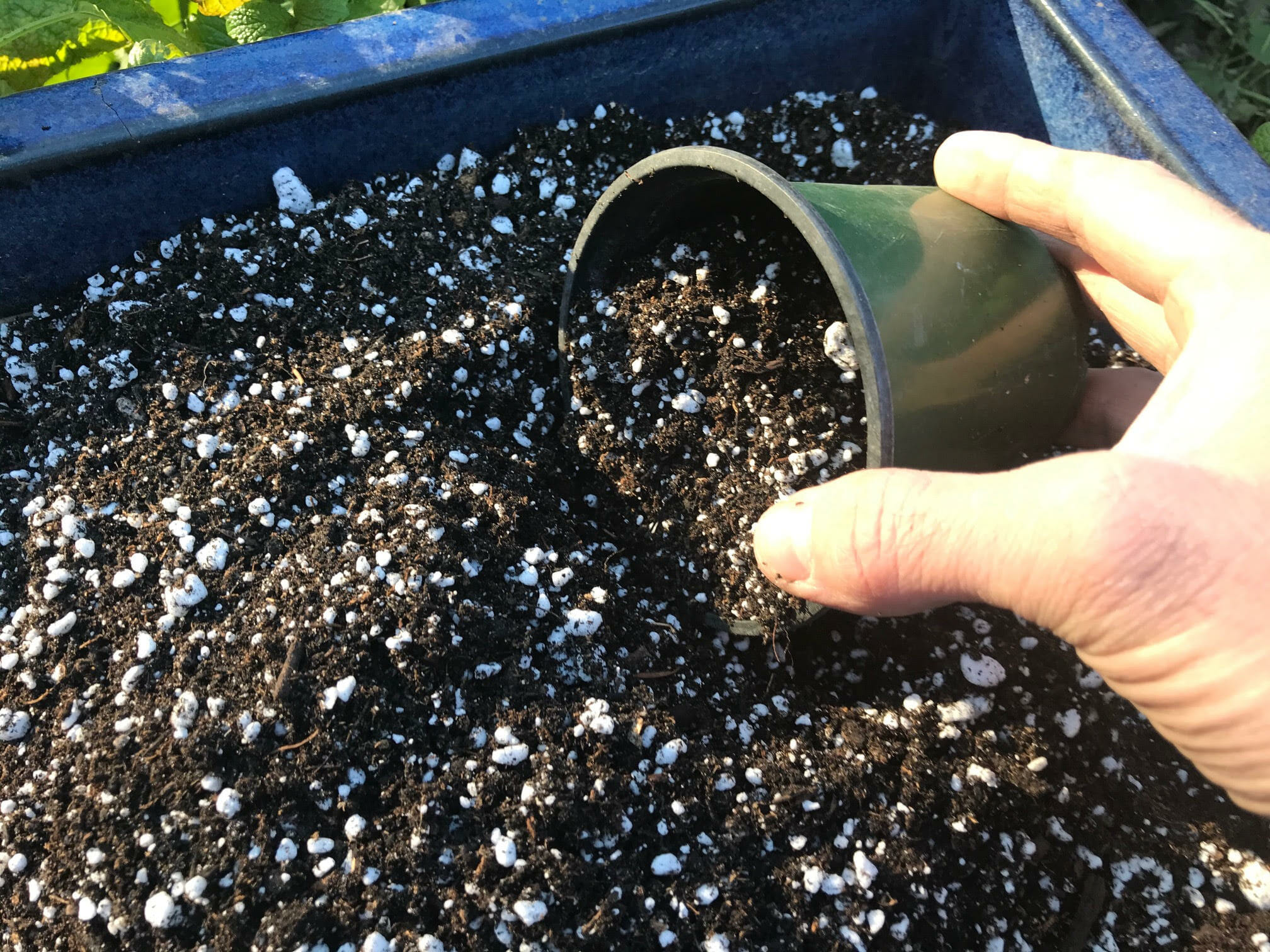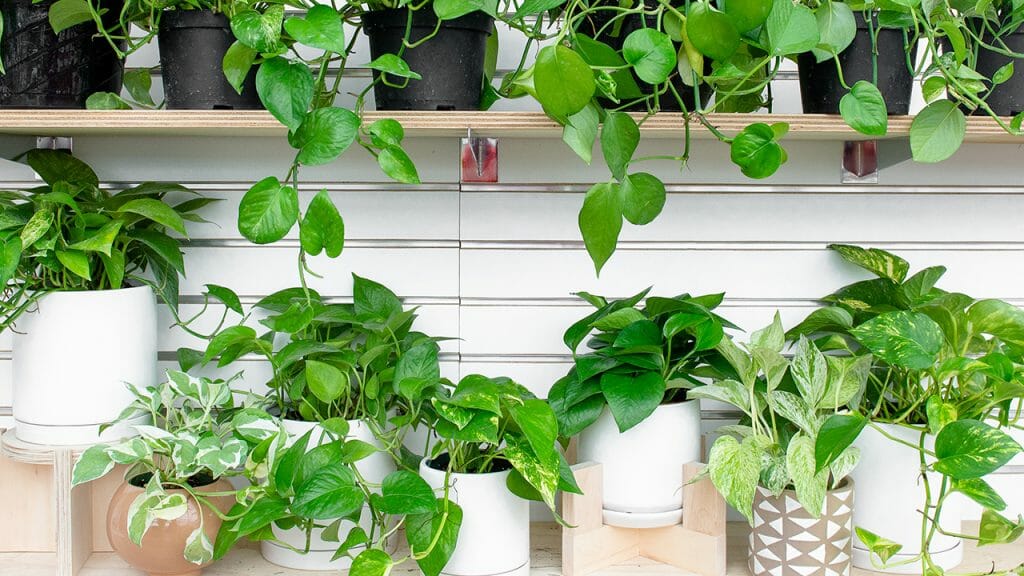Perlite and vermiculite are two popular potting additives that both serve to improve water retention and drainage however, they are not the same. What is the difference between perlite and vermiculite? Well, Perlite, a volcanic rock, is better at providing drainage, while vermiculite, a mineral compound, is better at water retention.
Knowing their similarities, it is easy to understand why people often confuse these two products. The way that they are packaged and advertised also does not help.
To do your plants a favor and to help prevent you from coming home with the wrong bag, we have put together this easy guide. After reading this, you will have a much clearer idea of the differences between perlite and vermiculite and most importantly, how to use them!
What Is Perlite?
Perlite is a specific type of volcanic glass with a very high water content. However, by the time that it gets to consumers, perlite looks nothing like rock glass.
The perlite that you buy in stores has been treated with high heat which causes the volcanic glass to ‘pop’. After this treatment, it looks like white puffy balls which is why some people may call it ‘volcanic popcorn’.
Its appearance is also why some people make the mistake that it has similar properties to styrofoam. To be clear, styrofoam has no place in your potting soil and is not a safe replacement for perlite.
The structure of perlite is very porous which is why it improves the drainage of potting soil. Unfortunately, it is so porous that in some situations the water will pass through too quickly.
Like popcorn, it takes up quite some space for how lightweight it is. This has two advantages; increased oxygen flow through the soil and loosening up dense compacted soil.
One of the advantages of perlite is that it has a nearly neutral pH. In other words, it won’t negatively impact the nutrient level of the soil it is in.
Another advantage is that since it is a rock, it does not rot and it does not become moldy either. You can safely touch perlite with your hands because it is non-toxic and does not leave any bad odors.
What Is Perlite Good For?
There are several reasons why you might want to add perlite to your potting soil:
- Improving soil aeration
- Quickening water drainage
- Making compacted soil lighter
- Slightly longer water retention
With these properties in mind, perlite is a popular addition to potting soil for plants that do better with slightly drier soil in between watering. Examples includes:
- Succulents
- Cacti
- Lavender
Perlite may also be helpful for plants that grow quickly and therefore need to be repotted relatively often. This is because perlite doesn’t rot and can retain nutrients well.
What Is Vermiculite?
Vermiculite is a mineral compound of iron, magnesium and aluminum silicate minerals. That is quite a mouthful but it is enough to know that this mineral compound reacts with some of the nutrients in soil to make it slightly more acidic.
Strangely, vermiculite itself is pH neutral so it is safe to touch with your hands. These brownish flakes feel very dry but once it comes into contact with water vermiculite acts like a sponge.
This mineral has lots of layers which expand when it becomes moist, quite similar to the sponge that you use in the kitchen. Like a sponge, it will also hold the moisture for a long time.
This is an advantage for plants that require constantly moist soil. As the moisture level of the potting soil lowers, the vermiculite will start to slowly release the water it is holding – just like in osmosis.
Vermiculite is available in different granular sizes and it is worth considering which one is best for your soil. Generally, the finer vermiculite grades are used in horticulture.
Just like perlite, vermiculite does not rot, grow mold or biodegrade which means that it will stay in the soil permanently. For this reason, some people may even choose to replace their compost with it.
What Is Vermiculite Used For?
Vermiculite can be used for many of the same purposes as perlite but with different results:
- Aerating soil
- Keeping soil moist for longer
- Making compacted soil lighter
Because it does exceptionally well in retaining soil moisture, vermiculite is best added to potting soil of moisture loving plants. Examples include:
- Ferns
- Lily varieties
- Herbs
- Tropical plants that prefer humid conditions
Vermiculite is also often added to the soil of seedlings. It does well in retaining nutrients, too which will help in the early stages of plant growth.
Perlite vs Vermiculite: The Outcome
Perlite is an amorphous volcanic glass that has a relatively high water content. It is used as a soil amendment and can improve drainage. Vermiculite is a hydrated laminar magnesium-aluminum silicate that is used for insulation and as a soil amendment.
It’s a bit of an on-going conversation on which to use, but in reality, they do different things!
When to use Perlite:
- Loosening dry, clay based soil.
- Drying out plants
- Propagating seeds to a different pot or container.
When to use Vermiculite:
- You’re looking to develop strong seeds in your pots or containers
- Vermiculite is an excellent additive to keep plants moist.
Frequently Asked Questions:
Can you substitute vermiculite for perlite?
Is perlite the same as vermiculite? No! Despite many people confusing the two product, you cannot substitute vermiculite for perlite. This is because vermiculite will retain moisture for much longer while perlite increases soil drainage.
Is vermiculite safe for organic gardening?
Yes, vermiculite is safe for organic gardening. However, you may want to check how the particular brand processes its vermiculite to be 100% sure. Fortunately, asbestos contamination is no longer an issue with vermiculite.
What is the best substitute for perlite?
There is no one-size-fits-all answer to this question, as the best substitute for perlite will vary depending on the specific application. Some common substitutes for perlite include pumice and expanded clay pellets.
Summary
Perlite and vermiculite are often added to potting soil to improve its conditions. While perlite is the best choice for improving water drainage, vermiculite is the best choice for improving water retention.
Thus perlite and vermiculite, despite having many other similar advantages, lead to different results in the soil. That is why these two products are not good substitutes of each other.
For the same reason, you would add these products to different kinds of plants. Add perlite to plants that are susceptible to root rot and need to dry out more in between watering sessions. Add vermiculite to plants that require a lot of soil moisture and do well in humid conditions.





